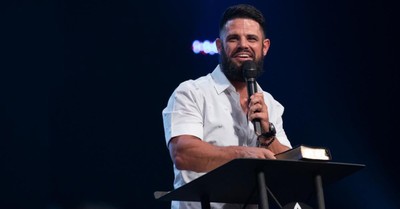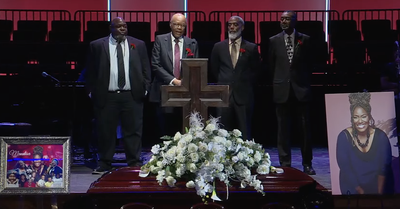
The lists seem endless: gifts to buy, events to attend, and cookies to bake, just to name a few. And the opportunities to give — whether it be coat drives, Giving Trees, toy collections, or other in-kind donations — can start to feel like a checklist, too.
Millions of Christian parents in the U.S. want to involve their kids in the act of giving this holiday season. We want to teach our children how to tangibly care for others, as well as share the love of Christ. Often, this looks like purchasing toys, clothes, and personal care items for children in need both locally and globally.
But we want our giving to be meaningful, not just one more box to check.
In light of this, I believe there is an alternative way we can engage our children in giving this holiday season — a way that has a beautiful, lasting impact both in our homes and around the world. We have an opportunity to teach our children how they can help kids just like them but who are growing up in orphanages or on the street, separated from their families. We can accomplish this by shifting some of our focus away from simply providing for temporary wants and needs and toward supporting long-term community- and family-strengthening efforts.
Start By Building Empathy
Our children naturally understand the experience of having a safe and loving family. But many kids grow up this way. What might it look like to begin engaging your kids in meaningful conversations about this big concept? My suggestion is to ask age-appropriate but not oversimplified questions about vulnerable children around the world. Parents might ask, ‘Do you know what an orphanage is?’ and then, ‘Why do they think some kids end up there?’
Questions like this are a great opportunity for us, as parents, to learn, too. For example, did you know that 4 of 5 kids who have ended up in an orphanage actually have at least one parent who’s still living? Or that the primary reason children end up in orphanages is poverty? We can learn that it costs much more — 5-10 times more — to take care of a child living in an orphanage than taking care of them in a family.
When we engage our kids with questions like, “Wouldn’t it be better if those kids could stay with their mom and dad?” and “What might we do to help them?” these important conversations build empathy. And when empathy turns into action, that’s when lives start to change.
The Impact of Collective Giving
Research on care for orphaned and vulnerable children and scripture both advise that children develop best in families. Cognitively, physically, and socially, children flourish in a caring home. So, while many of us enjoy the act and feeling that comes from giving tangible items to children during the holidays, some of whom are living in orphanages or residential homes, consider the numbers.
As one example, last year, over 10.5 million shoeboxes were filled with gifts for kids around the world. Multiply that number by the suggested $10 donation per box—that’s $105 million dollars—which doesn’t take into account the money spent on the contents inside.
What might that same amount of money do to support vulnerable families around the world?
There is a growing movement to support orphans and vulnerable children through families, offering economic aid, education, and basic services like medical and social care, among many others, so that families can care well for their children. Helping a family care for their child might not feel like we are engaging with children as directly as sending a soccer ball overseas, but the research-based best practice — the most effective and impactful way — to change a child’s life long-term is clear: care for and support them in the context of a family.
Where Tangible Meets Practical
So what do we do?
First off, involve your kids. What country or culture is your child interested in? Spend time learning about that country and the unique needs and challenges children and their families face. Then, talk about what it might look like to support a family there. Consider shifting your giving to an organization with a family-strengthening model.
When I worked as a missions pastor, we loved to engage our Sunday School kids experientially about life in other countries. We’d have days where the kids would come to watch how parents made food without a stove and what it would be like to do the same chores as kids there, to have to travel to get water for drinking, cooking, and cleaning. These experiences allowed kids to build cross-cultural connections by having fun, but also gaining a heart of compassion and understanding.
You can also share what you’ve learned about family strengthening through conversations with other families in your community and churches — and on your social media accounts. Continue talking with your kids throughout the year, and pray with them for the vulnerable children you support.
We don’t want to inadvertently teach our children that service and giving during the holidays is a box to check. In a month where we often feel rushed and overwhelmed, this is an opportunity to slow down to consider how best to care for vulnerable children while sharing the love of Jesus.
Let’s teach our children by example and give in a way that truly changes lives—with an impact that reaches well beyond the holiday season.
Photo Courtesy: ©Getty Images/Natalie_
Elli Oswald is the executive director of the Faith to Action Initiative.










